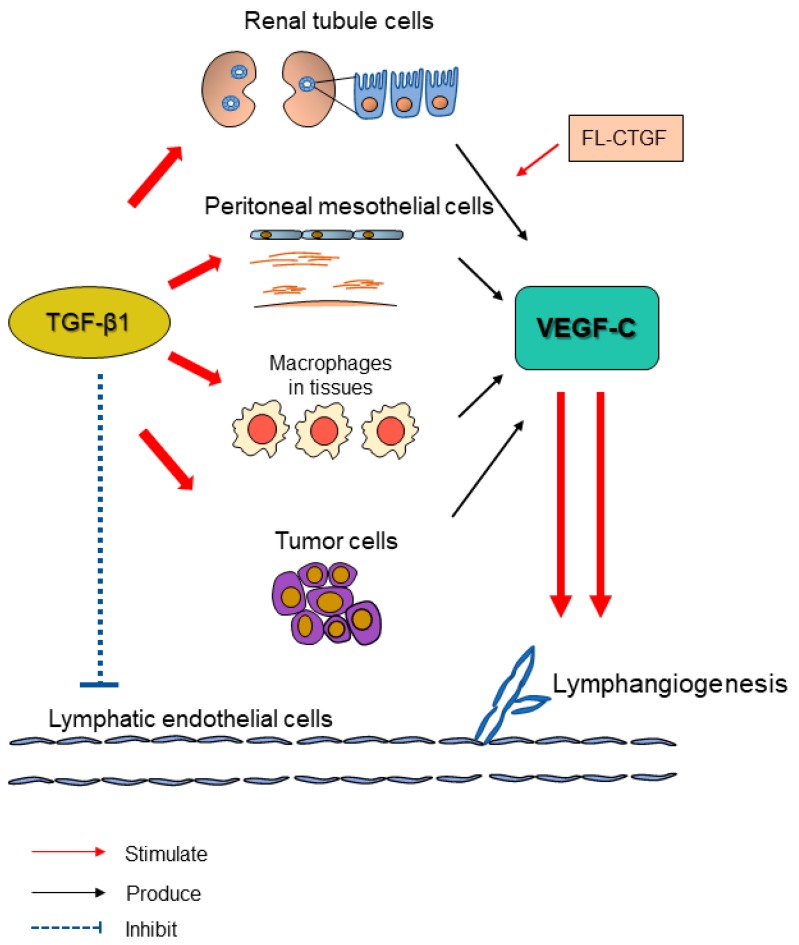Figure 1.
Transforming growth factor-β (TGF-β) promotes tissue lymphangiogenesis via upregulating vascular endothelial growth factor (VEGF)-C in various fibrotic pathologies (kidney fibrosis, peritoneal fibrosis, tissue inflammation, and tumor microenvironment). Lymphangiogenesis is generally observed during tissue fibrosis. One possible mechanism is acknowledged to be the TGF-β–VEGF-C pathway. TGF-β, as a key player in tissue fibrosis, is demonstrated to have a direct inhibitory effect on the proliferation and migration of lymphatic endothelial cells (LECs) [12]. However, TGF-β is found to enhance VEGF-C production in renal proximal tubule cells [8,9], collecting tubule cells [8], peritoneal mesothelial cells [10], macrophages [8,9,10], and some tumor cells [15]. The upregulated VEGF-C increases the growth and tube formation of LECs, abrogating the inhibitory effects of TGF-β and leading to lymphangiogenesis. Additionally, connective tissue growth factor (CTGF), as induced by TGF-β in multiple kinds of cells, also promotes the production of VEGF-C during renal fibrosis [16]. Full-length CTGF binds to VEGF-C and suppresses the tube formation of LECs while the effect is counteracted by the cleavage of CTGF in vivo [16]. In summary, increased TGF-β levels promote VEGF-C production in specific cells and lead to lymphangiogenesis during tissue fibrosis.

